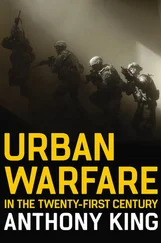In southern Poland, Konev’s forces had secured a crossing over the Vistula near Sandomierz on 29 July and began feeding elements of Katukov’s 1 TA into the bridgehead. Heeresgruppe Nordukraine mounted counter-attacks to eliminate the bridgehead, but without success. On 5 August, the reconstituted s.Pz.Abt.501 was sent to spearhead another counter-attack with 45 of the new Tiger II tanks. This was the combat debut of this new weapon on the Eastern Front and it was a disaster. Forced to make a 50km road march from the rail head to the front, 37 of 45 Tiger IIs broke down due to faulty final drives. When the counter-attack actually began, it did not go well. A single T-34/85 from the 53rd Guards Tank Brigade (6 GTC/3 GTA), commanded by Leytenant Aleksandr P. Oskin, was camouflaged in a corn field and spotted a platoon of three King Tigers approaching in column along a road. Oskin fired BR-365P APCR rounds from a range of just 200 metres against the turret sides of the lead two Tigers and destroyed both with four rounds each; the turrets of both King Tigers were blown off. The third King Tiger tried to retreat, but Oksin pursued and pumped a round into its engine compartment, disabling it. In the one-sided action, 11 of 15 German King Tiger crewmen were killed, the rest captured. {48} The next day, the s.Pz.Abt.501 was forced to abandon another King Tiger, which was captured intact by the Soviets.
By the end of August 1944, the war in the East was decided, even though the Wehrmacht was able to temporarily create a new front. In an effort to get more tanks to the front, the OKH sent four Panzer-Brigaden, each with 36 Panthers, to the East in August 1944. These Panthers were the improved Ausf G model, which were less prone to engine fires, but the final drives still tended to fail after just 150km. In contrast, the Red Army was rapidly re-equipping its tank units with the T-34/85, which in competent hands could deal with any German tank. The Soviets not only had an overwhelming numerical superiority, but they were closing the gap in qualitative terms as well.
During the period June–August 1944, the Third Reich suffered catastrophic defeats on both the Eastern and Western Fronts. Altogether, the Wehrmacht suffered over 900,000 dead or missing in this period, which cost them the bulk of the combat veterans who had achieved the victories of 1940–42. After this point, the Wehrmacht could only continue to fight on for another eight months by scraping the bottom of the barrel. The Germans also lost 2,398 tanks in this three-month period, including 801 Panthers and 481 Tigers; these losses could not be replaced on a one-for-one basis because Allied strategic bombing on the tank factories and rail yards in Germany was finally causing a drop in German tank production. Without adequate fuel, veteran crews, spare parts or replacement tanks, the outlook for the Panzer-Divisionen was grim.
Compared to previous Soviet offensives, the Red Army did not pay an excessive price for its unprecedented gains during Bagration and the L’vov-Sandomierz operations; altogether 256,000 personnel dead or missing and 4,300 tanks lost. These losses would be made good in short order and the Red Army was gathering its strength for the final lunge into Germany.
Epilogue, September 1944–May 1945
Due to the drawn-out Polish rebellion in Warsaw, which the Germans were allowed to crush undisturbed, the Stavka decided to temporarily suspend operations in the centre of the Eastern Front and concentrate on the flanks. The 1st Baltic Front struggled to sever Heeresgruppe Nord’s lines of communication through Riga, but PzAOK 3 was reinforced and mounted another counter-offensive on 16 September with nearly 400 tanks – one of the last major German armoured operations of this size on the Eastern Front. However, the effort failed to remove the threat to the corridor and lost one-third of its tanks. The Red Army’s tank units were now plentifully equipped with the T-34/85 and even the JS-2 was available in significant numbers. Every time the Germans managed to scrape together an armoured force, it ran straight into a wall of anti-tank guns and was constantly attacked by Soviet fighter-bombers. The Luftwaffe could no longer protect the Panzer-Divisionen. After absorbing the German counter-attacks, the 1st Baltic Front began its own massive offensive on 6 October, using the 5 GTA as its battering ram. The 3 PzAOK disintegrated and retreated into East Prussia, while the 5 GTA reached the Baltic on 10 October. By 15 October, Riga fell and Heeresgruppe Nord was isolated in the Courland Peninsula, where it remained for the rest of the war. The 4. and 12.Panzer-Divisionen were among the isolated units. Instead of evacuating these two armies by sea to reinforce the defence of East Prussia, Hitler ordered them to remain where they were, although some units were evacuated in January 1945. Amazingly, the Soviets decided to keep attacking the Courland Pocket all winter – even though it made little military sense – and lost over 1,000 tanks for minimal gains.
The other major focus for the Stavka was the Balkans. Romania was completely occupied by the end of September and the 1st and 4th Ukrainian Fronts advanced into Hungary, while the 2nd and 3rd Ukrainian Fronts marched into Bulgaria and Yugoslavia. The German PzAOK 1 and PzAOK 4 put up a stiff fight in the Carpathians, particularly at Dukla Pass in eastern Czechoslovakia in September. At Debrecen, the Germans managed a counter-attack that destroyed Pliev’s mobile cavalry-mechanized group, although this was just a tactical victory. Since AOK 6 had been destroyed yet again in Romania, the OKH decided to form a new 6.Armee, even though it only had the decimated 13.Panzer-Division and a single infantry division. Pursued by Tolbukhin’s forces, AOK 6 retreated into southeastern Hungary and by the end of October nearly half of Hungary had been overrun and Belgrade had been liberated. In November, Malinovsky’s 2nd Ukrainian Front made a push for Budapest, but did not encircle the city until 26 December 1944.
Amazingly, Germany succeeded in recreating fronts in both the east and west, while their opponents outran their supply lines. Yet instead of using this respite to rebuild his forces in the East, Hitler decided to allocate his remaining armoured reserves for a grand, nonsensical counter-stroke in the West in the Ardennes. All the best armoured units went to the Ardennes, leaving mostly burnt-out or untried divisions in the East. Yet the Ardennes offensive failed and squandered Germany’s last armoured reserves. In addition to ill-conceived counter-strokes, the Germans also decided to upgrade the Großdeutschland division to a corps-size formation, and the same was done with the Hermann Göring division; this was a foolish waste of resources on a few elite units while the rest of the Panzer-Divisionen were starved of replacements. The second division in Panzerkorps Großdeutschland , Panzergrenadier-Division Brandenburg , was poorly equipped and its Panzer-Regiment only had a single battalion equipped with a mix of Panthers, Pz IVs, Pz IIIs, assault guns and SPW half-tracks. {49}
In early January 1945, Hitler mandated that AOK 6 would mount a relief operation to rescue the trapped forces in Budapest, which included the 13.Panzer-Division, Panzergrenadier-Division Feldherrnhalle and Hungarian 1st Armoured Division. Operation Konrad was hastily organized, with the IV SS-Panzerkorps ( Totenkopf and Wiking ) making two efforts to break through to the city but failing. Even with the addition of the 23.Panzer-Division and King Tigers from the s.Pz.Abt.503, the third attack also failed. A small number of troops escaped the city in a breakout effort, but the rest of the garrison surrendered on 13 February. The quality of German replacements dropped off sharply by late 1944, as youths were conscripted to replace combat veterans. Even the Waffen-SS was scraping the bottom of the barrel: 16-year-old Gunter Grass was conscripted in autumn 1944 and sent to join the SS- Frundsberg division in Silesia in early 1945. Grass was assigned to a unit with three Jagdpanthers but was given no training and panicked in his first taste of combat. {50} Even as Germany deployed its best tanks and tank destroyers in the final hours of the war, it had few competent troops left to operate them.
Читать дальше
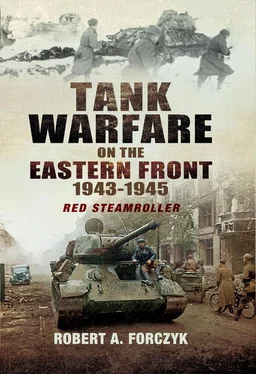



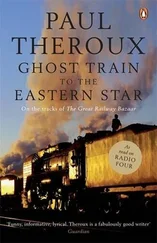
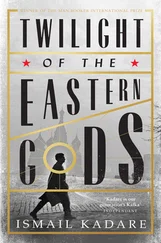
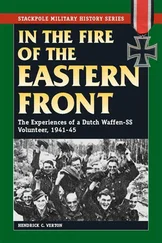

![John Stieber - Against the Odds - Survival on the Russian Front 1944-1945 [2nd Edition]](/books/405234/john-stieber-against-the-odds-survival-on-the-russian-front-1944-1945-2nd-edition-thumb.webp)


